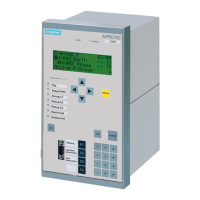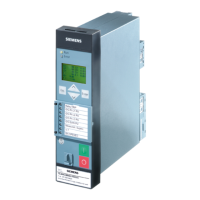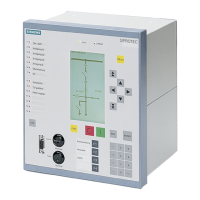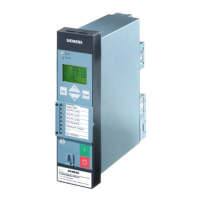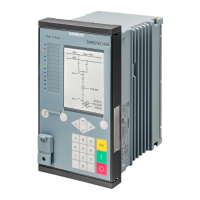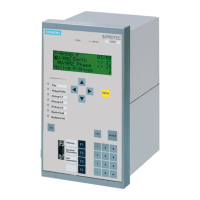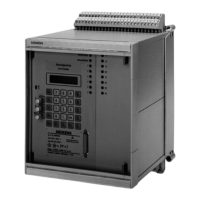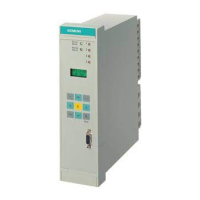Testing User-Defined Functions
CFC Logic
The device has a vast capability for allowing functions to be defined by the user, especially with the CFC logic.
Any special function or logic added to the device must be checked.
Of course, general test procedures cannot be given. Configuration of these functions and the target conditions
must be actually known beforehand and tested. Possible interlocking conditions of switching devices (circuit
breakers, disconnectors, ground switch) are of particular importance. They must be observed and tested.
Current, and Phase Rotation Testing
≥ 10 % of Load Current
The connections of the current and voltage transformers are tested using primary quantities. Secondary load
current of at least 10 % of the nominal current of the device is necessary. The line is energized and will remain
in this state during the measurements.
With proper connections of the measuring circuits, none of the measured-values supervision elements in the
device should pick up. If an element detects a problem, the causes which provoked it may be viewed in the
Event Log. If current or voltage summation errors occur, then check the matching factors.
Messages from the symmetry monitoring could occur because there actually are asymmetrical conditions in
the network. If these asymmetrical conditions are normal service conditions, the corresponding monitoring
functions should be made less sensitive.
Current and Voltage Values
Currents and voltages can be seen in the display field on the front of the device or the operator interface via a
PC. They can be compared to the quantities measured by an independent source, as primary and secondary
quantities.
If the measured values are not plausible, the connection must be checked and corrected after the line has
been isolated and the current transformer circuits have been short-circuited. The measurements must then be
repeated.
Phase Rotation
The phase rotation must correspond to the configured phase rotation, in general a clockwise phase rotation. If
the system has an anti-clockwise phase rotation, this must have been considered when the power system data
was set (address 209 PHASE SEQ.). If the phase rotation is incorrect, the alarm
Fail Ph. Seq.
(FNo 171)
is generated. The measured value phase allocation must be checked and corrected, if required, after the line
has been isolated and current transformers have been short-circuited. The measurement must then be
repeated.
Test for High Impedance Protection
Polarity of Transformers
When the device is used for high-impedance protection, the current at Ι
N
or Ι
Ns
is equivalent to the fault
current in the protected object. It is essential in this case that all current transformers feeding the resistor
whose current is measured at Ι
N(S)
have the same polarity. The test currents used for this are through currents.
Each CT must be included in a measurement. The current at Ι
N(S)
may never exceed half the pickup value of the
single-phase time overcurrent protection.
3.3.5
3.3.6
3.3.7
Mounting and Commissioning
3.3 Commissioning
272 SIPROTEC 4, 7SJ61, Manual
C53000-G1140-C210-6, Edition 05.2016
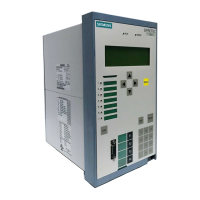
